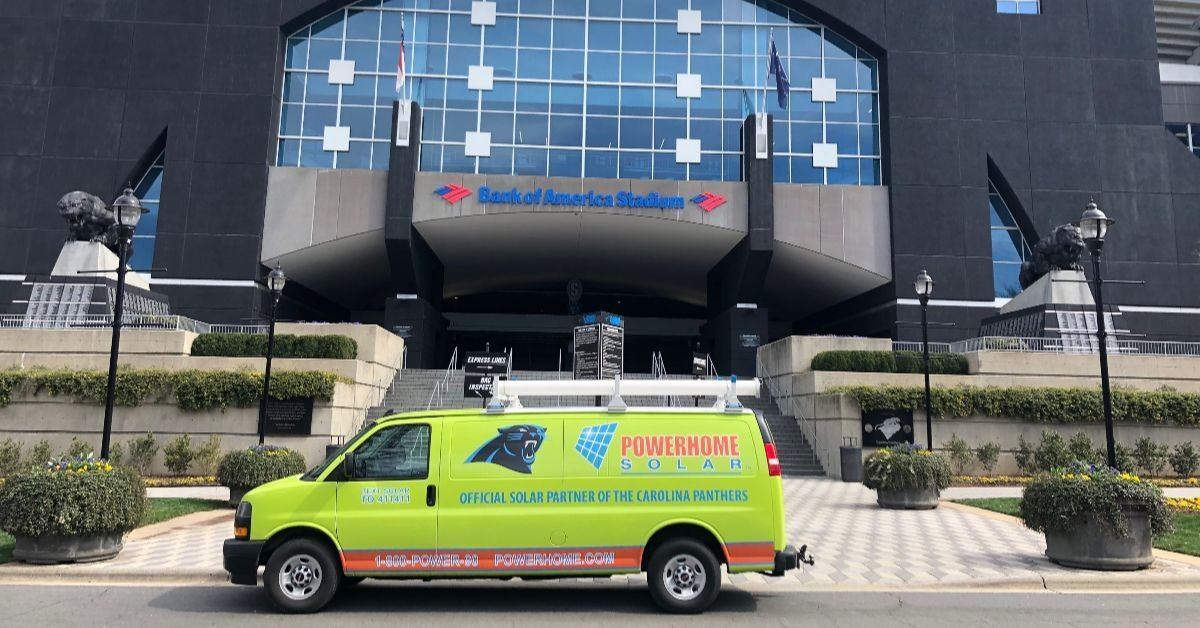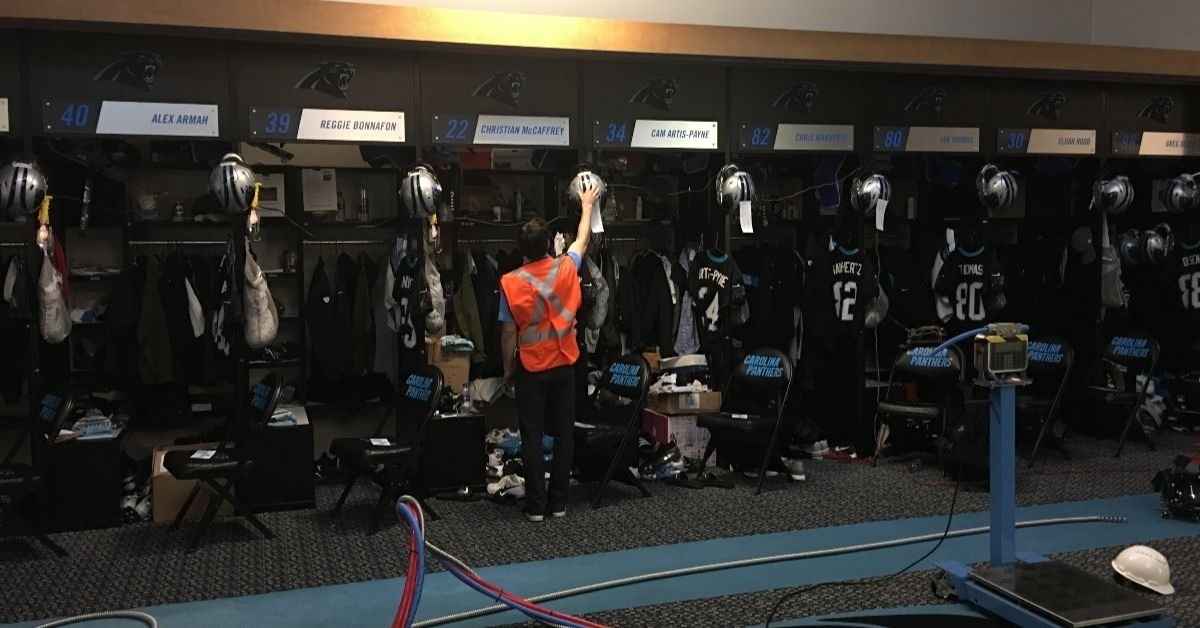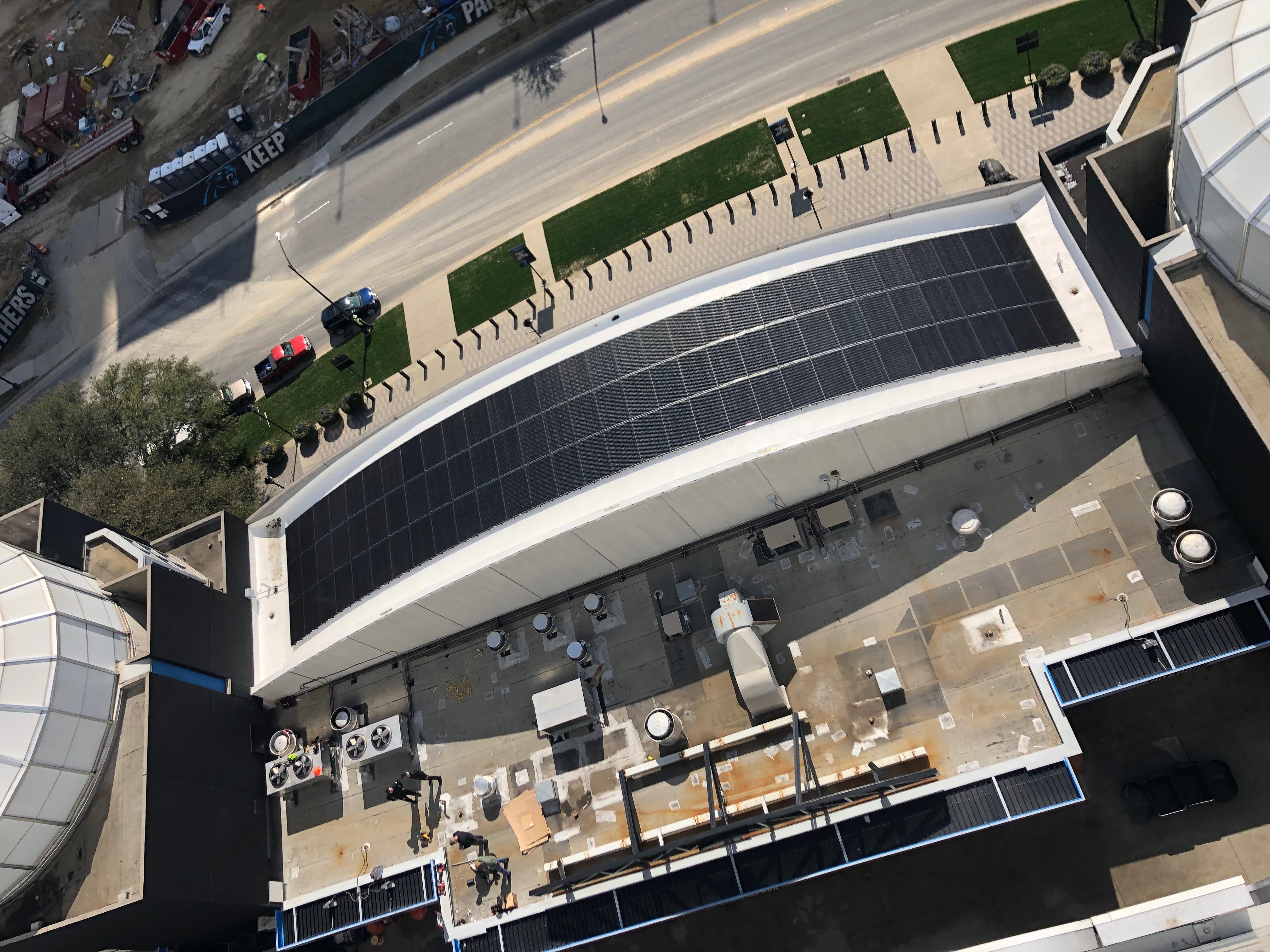North Carolina is among the U.S. leaders in solar power installations, and the NFL’s Carolina Panthers are now joining as solar leaders in the sports industry with POWERHOME Solar installing panels on the Panthers’ Bank of America Stadium to reduce energy costs and the stadium’s carbon footprint.
When the National Football League joined the Green Sports Alliance in 2018, it did so with the intent to support and grow sustainability initiatives across the whole league. The Carolina Panthers jumped at the opportunity right away, and with POWERHOME Solar, one of the nation’s fastest growing solar companies, located in their backyard, solar energy was the obvious place to start.
In March 2019, POWERHOME Solar began the process of installing solar panels on Bank of America Stadium to feed into the venue’s renewable energy goals and join the ranks of other ‘green’ stadiums across the league.
I had the pleasure of chatting with POWERHOME Solar about this exciting partnership and their role in bringing the Panthers into the clean energy mix.
POWERHOME Solar Background
Matt Chester: Can you give a little background on POWERHOME Solar as a company? When was it formed, how big has it grown, and what’s the guiding mission?
POWERHOME Solar: Jayson Waller is a serial entrepreneur and has successfully created multiple businesses, including ISI Alarms NC Inc. and Power Home Technologies (PHT). ISI earned $12 million in sales annually in less than eight years while PHT achieved $30 million sales annually in just three years.
Jayson launched his latest venture, POWERHOME Solar, in 2015. He is the founder and CEO. The company eclipsed $100 million in sales in 2018 and has grown to service customers in seven states with nearly 700 employees. POWERHOME is currently ranked as the number 12 residential solar contractor in the nation according to Solar Power World.
The company’s goal is to help customers achieve energy independence by selling renewable energy at prices below utility rates.
Bank of America Partnership
MC: Will there be any kind of educational resources for fans attending the games to learn about solar panels, their benefits, and how to get started on installations at their home?
PS: POWERHOME Solar has activation teams in place outside of the stadium at each home game to help educate fans about solar energy benefits and generate sales leads. Additionally, POWERHOME signage can be found within the stadium.
MC: How did the partnership with Bank of America Stadium come together?
PS: Jayson also oversees POWERHOME Solar’s partnerships with professional sports teams, including the Carolina Panthers, Cleveland Browns, Detroit Lions, and Pittsburgh Steelers, as well as with Duke University. The partnerships help each entity reduce dependence on grid energy and decrease their carbon footprints.
These strategic partnerships also help raise consumer awareness about the features and benefits of solar energy, creating a ripple effect for potential customers throughout North Carolina. POWERHOME is based in the Charlotte, North Carolina area and is a short drive to Bank of America Stadium. It made sense to see if we could work with the team closest to our backyard.
As a part of the deal, we also shot a commercial where the team’s Pro Bowl Center, Ryan Kalil (who retired at the end of the 2018 season), served as director. You can see the 90-second cut of the commercial on YouTube, and we also published a behind-the-scenes article about the shoot.
Panel Specifics
MC: Can you tell me more about the panels installed? And how long did installation take?
PS: Our contracts with stadiums don’t allow for the disclosure of detailed information, but POWERHOME installs monocrystalline silicon solar panels from Silfab, based in Bellingham, Washington. The panels used have a power production warranty of 30 years, meaning that the panel provider will guarantee the panels will function at 80% of the original capacity at the end of 30 years. A POWERHOME Solar panel will generate about 36 kilowatthours per month.
The Bank of America installation took four days to complete.
MC: What are some unique aspects of Bank of America Stadium that had to be taken into account when designing this solar system?
PS: We placed the solar panels on the top of entrance archways, which is a different challenge from typical commercial buildings that have flat roofs. But our team was up for the challenge of installing panels on this curved surface, and they look great!
Solar Trends
MC: Bank of America is the third NFL facility to use POWERHOME– can you tell me about the other two? What makes sports facilities primed to harness the benefits of solar power?
PS: We also installed solar panels for the Cleveland Browns at FirstEnergy Stadium and for the Detroit Lions on the parking garage at Ford Field, as well as the team training facility in Allen Park, Michigan.
Sports franchises in general have high energy costs for their stadiums, and it only makes sense for those franchises to try and offset some of their power bills with clean, renewable energy. On top of that, these franchises can own a portion of their power for the long haul. These teams’ responsiveness to hearing and heeding the benefits of clean energy are a benefit to all.
MC: North Carolina has become a national leader when it comes to solar generation– what about the state has made it embrace solar so thoroughly? How do Bank of America Stadium and the Carolina Panthers fit into that?
PS: North Carolina is a great state for solar because of the abundant sunshine available in the southeastern U.S. and state-based legislation that has embraced solar. And with costs to install solar having gone down more than 70% since 2010, homeowners and business owners have increasingly become aware of the benefits of going solar at their homes and places of business. When the financials behind going solar become as apparent as the value that using clean energy brings, it becomes a no-brainer for customers on multiple levels.
For more information on POWERHOME Solar, visit their website.
About the author: Matt Chester is an energy analyst in Washington DC, studied engineering and science & technology policy at the University of Virginia, and operates the Chester Energy and Policy blog and website to share news, insights, and advice in the fields of energy policy, energy technology, and more. For more quick hits in addition to posts on this blog, follow him on Twitter @ChesterEnergy.








